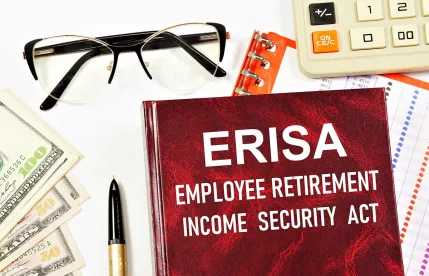The SECURE 2.0 Act of 2022 (SECURE 2.0) eliminates the requirement for plan sponsors to provide certain notices to eligible but unenrolled employees in defined contribution plans, changes the delivery method plan sponsors must use to furnish benefit statements to participants in retirement plans, and modifies the language required in annual funding notices under defined benefit plans. It also requires agencies to perform significant studies on several notices and report their findings to Congress.
Before SECURE 2.0, plan sponsors of defined contribution plans were required to furnish eligible but unenrolled employees with all notices and other documents, such as summary plan descriptions (SPDs). Effective for plan years beginning after December 31, 2022, plan sponsors no longer have to furnish unenrolled, eligible employees with notices as long as they provide the unenrolled, eligible employee an SPD and other notices upon their initial eligibility and then deliver an “annual reminder notice” advising of their eligibility to participate in the plan and any otherwise required document the unenrolled participant may request.
Generally, plan sponsors must provide benefit statements to participants in defined contribution plans every quarter and participants in defined benefit plans once every three years. Effective after December 31, 2025, defined contribution plans must provide at least one benefit statement on paper in written form each year, and defined benefit plans must provide at least one benefit statement on paper in written form every three years. Participants may elect to opt out of receiving the paper statement.
SECURE 2.0 adds another requirement to the 2002 e-delivery safe harbor: effective for participants first eligible to participate in a retirement plan after December 31, 2025, plan sponsors must now provide a one-time initial paper notice of their right to request all required documents be furnished on paper in written form before the plan sponsor may begin furnishing benefits statements electronically under the safe harbor. A plan may deliver a duplicate electronic statement in any situation where the plan furnishes a paper benefit statement.
The annual funding notice, provided annually to defined benefit plan participants, is no longer required to disclose the plan’s “funding target attainment percentage” and will instead need to describe the plan’s “percentage of plan liabilities funded.” This change is effective for plan years beginning after December 31, 2023.
Congress also demonstrated an interest in improving certain plan-related participant notices and disclosures by assigning these tasks:
-
The Government Accountability Office (GAO) will prepare a report analyzing the effectiveness of Internal Revenue Code §402(g) notices required to be provided by plan administrators of qualified plans to recipients of eligible rollover distributions, describing different distribution options and related tax treatment. The GAO’s report must analyze the effectiveness of §402(g) notices and make recommendations, if needed, to enhance eligible rollover distribution recipients’ understanding of various distribution options, the tax consequences of each option, and spousal rights. The GAO has 18 months to complete this task.
-
The Department of Labor (DOL) must review its fiduciary disclosure requirements for participant-directed individual account plans. They must explore potential improvements to the disclosure requirements that could enhance participant understanding of defined contribution plan fees and expenses and the impact of such fees and expenses over time. The DOL will then report to Congress on their findings, including the advisability of potential consumer education around financial literacy concepts applicable to retirement plan fees and any recommended legislative changes needed to address those findings. The DOL has three years to complete this task.
-
The DOL and Treasury (IRS) will adopt regulations permitting, but not requiring, the consolidation of certain retirement plan participant notices. The participant notices eligible for consolidation include, among others, the §404(c)(5)(B) notice — concerning default investment arrangements under participant-directed individual account plans and the §514(e)(3) notice — concerning automatic contribution arrangements. Any combined notice must still satisfy the requirements of all notices and may not obscure or fail to highlight the primary information required by each notice. The DOL and IRS have two years to complete this task.
Tenechia D. Lockhart also contributed to this article.




 />i
/>i

